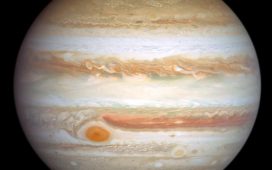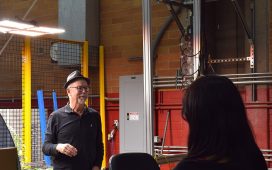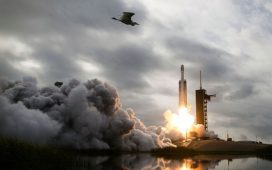Very little is known about the US Space Force’s X-37B Orbital Test Vehicle. The unmanned space plane, built by Boeing’s Phantom Works division, is thought to be a test bed for next-generation sensor technologies that could be used to target a hostile power’s satellites in the event of an orbital conflict.
This week, the Space Force [USSF] announced that the X-37B will begin executing a series of “novel manoeuvres” called aerobraking.
Secretary of the Air Force Frank Kendall said: “This novel and efficient series of manoeuvres demonstrates the Space Force’s commitment to achieving groundbreaking innovation as it conducts national security missions in space.”
Former United States Secretary of the Air Force Heather Wilson explained in 2019, that when the X-37B was in an elliptical orbit it could potentially use the drag from the upper layers of the Earth’s atmosphere to make an orbit change – making the craft difficult to track and allowing for secret activities.
There have been numerous theories about the exact purpose of the 30-foot mini-shuttle. In 2010, an article in Space Daily suggested that the X-37B could be used as a spy satellite or to deliver weapons from space.
The Pentagon denied those claims, without adding any further information about the craft’s exact purpose.
One of the X37’s unique characteristics, compared to the much larger Space Shuttle that preceded it, is how long it can remain in orbit. The two operational X-37Bs have between them spent a combined 3,774.4 days (10.34 years) in space, spread over just six missions.
The aerobraking test will enable the craft to alter its orbit much more readily than a conventional satellite, allowing the US military to place it in a fixed orbit above almost any spot on Earth at very short notice.
One early theory about the X37’s true purpose was that it could be used to drop virtually unstoppable smart bombs from low Earth orbit.
That speculation was dismissed by University of Maryland professor Mark Lewis, who once served as the Air Force’s chief scientist. He claims that the craft was not capable of changing its orbit without expending vast amounts of fuel – something the aerobraking manoeuvre could address.
A Space Force statement explains: “The use of the aerobraking manoeuvre – a series of passes using the drag of Earth’s atmosphere – enables the spacecraft to change orbits while expending minimal fuel.
“Once the aerobrake manoeuvre is complete, the X-37B will resume its test and experimentation objectives until they are accomplished, at which time the vehicle will de-orbit and execute a safe return as it has during its six previous missions.”







